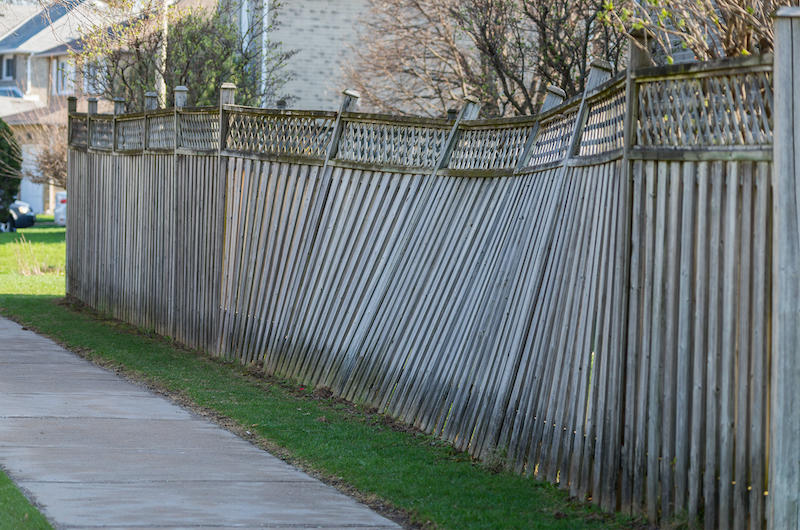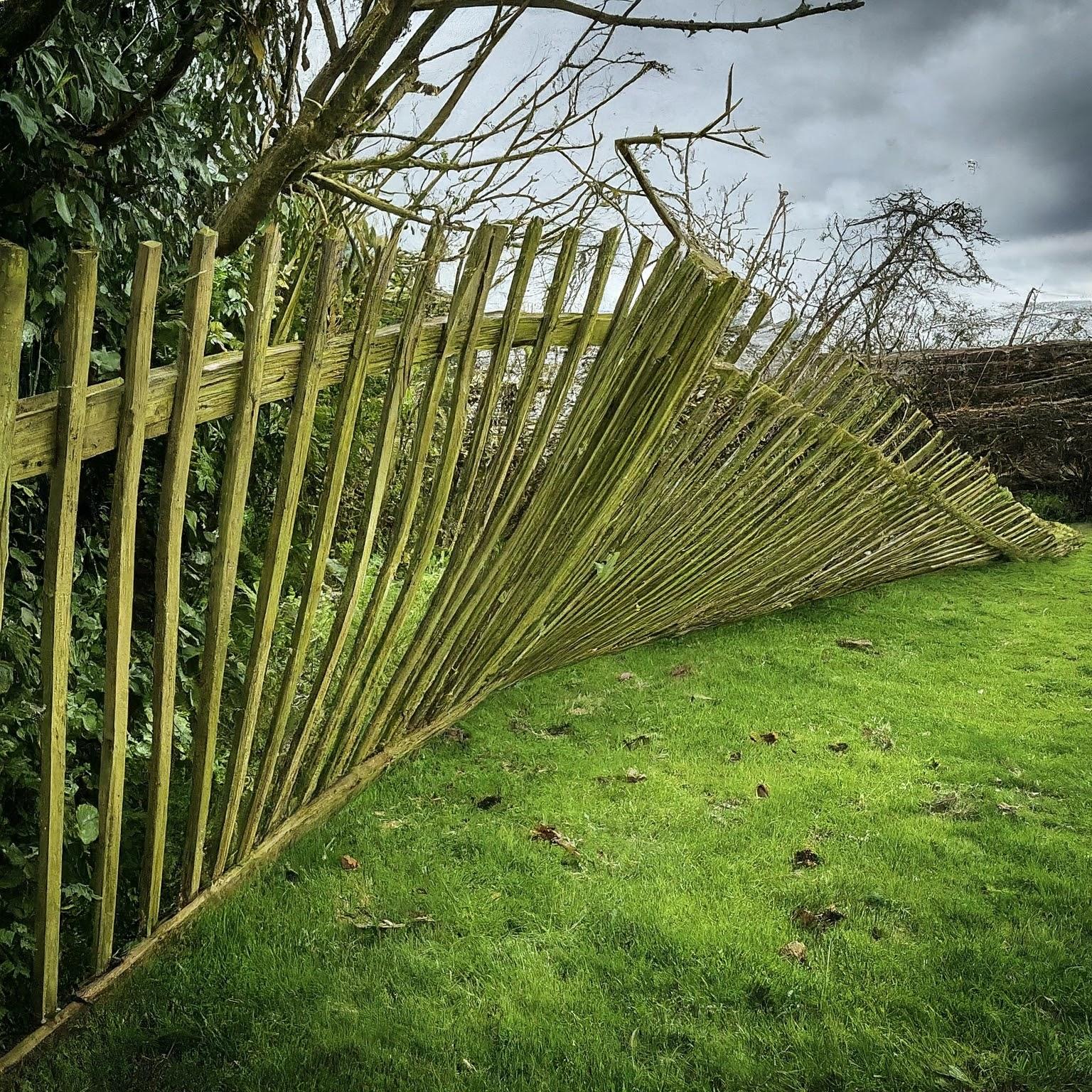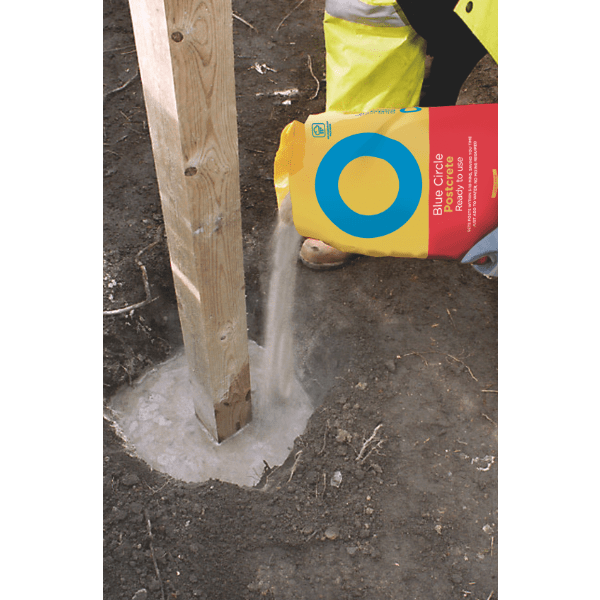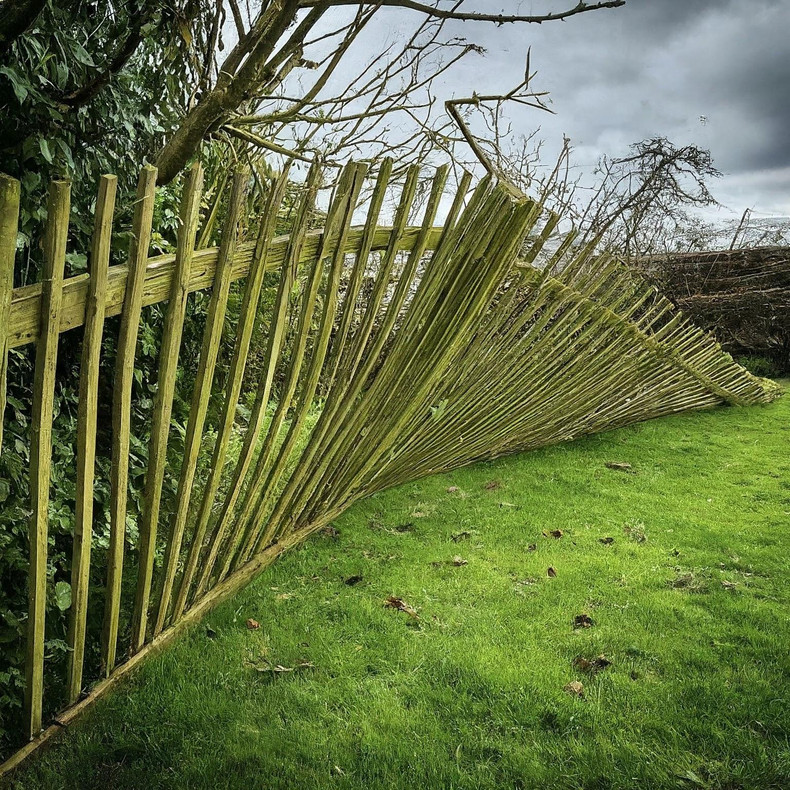
4 reasons why you fence is falling down
- Wet / Saturated Ground: The beginning of 2024 in Wales has brought with it an abundance of rain, resulting in soft and easily displaced ground. Unlike solid, dry dirt, soft ground poses a challenge for maintaining the stability of your fence. As the posts strain under the pressure of wind, they impart some leverage force on the ground that is anchoring them in place. If this anchor is soft mud because it is full of water, this provides less resistance, resulting in more movement, more leverage and so on. Eventually, the soil will be displaced enough by the movement of the fence post, thus not providing sufficient holding power to keep your fence stood upright. The larger the fence, the greater the weight and leverage working against the soil's efforts to remain firm. When the ground succumbs to these conditions, the fence loses its crucial support, making it susceptible to leaning or collapsing.

- Strong Winds / Storms: The winter months in the UK often unleash a range of storms and powerful winds. In areas like Swansea, Bridgend, and Cardiff, the coastal winds persist throughout the year. While fence panels are essential for providing security and privacy, they serve an additional purpose as a wind block during the frequent high winds. If the fence posts are not sturdy enough to withstand these forces, your fence is at risk of collapsing.
- Old / Rotten Timber: Typically, well-constructed timber fences, when made with the right materials and treatments, can endure for around 15 years without significant problems. However, it's essential to recognize that all timber has a finite lifespan. If your fence is leaning and the timber displays evident signs of degradation, it's a clear indication that it's approaching the end of its service life.
- Badly Constructed Fence: When a fence is not initially constructed with care and precision, its durability is compromised, leading to premature collapse. This issue isn't exclusive to DIY enthusiasts; even some trade "professionals" have been known to erect questionable fences. Undersized fence posts, inadequately anchored timber fence posts, and large spanning gaps are common pitfalls that can substantially diminish the expected lifespan of your fence. It underscores the importance of entrusting your fencing projects to skilled and knowledgeable professionals or taking extra care and attention to detail if you're a DIY enthusiast. Investing in a well-built fence from the outset can save you from the headache of early replacements and repairs.
Should I fix or replace my timber fence?
Honestly, this would come down to what your budget is. If you don't have the budget to build a better fence, then fixing what you have is going to be your only real option. (We can help if your on a tight budget, send us some photos and we'll send you some suggestions to make your fence safe and secure again, call us on 01656 745959 or drop us an email).
Unless there is a specific reason why your fence collapsed, like a tree falling on it, then there's likely to be some underlying issues with your fence if it has fallen over. With all the issues mentioned, your fence is (usually) only connected the the ground using fence posts. Once the fence post fails, or the anchor to the ground fails, then the fence will lean and potentially fall over. If your fence has fallen over, at a minimum you should reset the fence posts back into the ground using a suitable anchor such as postcrete. Lets take a look at the options above, and go through each one and see what our options are.
- Wet / Saturated Ground: Firstly, I would recommend looking at why your garden is flooding or saturated. If your garden is not sufficiently draining the rainwater away, there could be some other long term issues facing your
 property as a result. There are a few options to fix a flooded garden such as a French Drain, Soakaways or even rainwater collection in some cases. To fix the drainage issue, speak with a drainage specialist. As for your fence, I'd recommend digging wider (around 300mm wide) and deeper (minimum 2ft) fence post holes for your fence post and setting the timber fence post in concrete (postcrete). The over-sized post holes should distribute the pressures from the post over a larger surface area resulting in less force being applied to the softer ground. If the fence post is in good condition it can be reused, if it shows any signs of rotting or degrading, replacing it now would be quicker and easier at this stage. This would not be a replacement for fixing the drainage issues, but will help with prolonged periods of wet weather.
property as a result. There are a few options to fix a flooded garden such as a French Drain, Soakaways or even rainwater collection in some cases. To fix the drainage issue, speak with a drainage specialist. As for your fence, I'd recommend digging wider (around 300mm wide) and deeper (minimum 2ft) fence post holes for your fence post and setting the timber fence post in concrete (postcrete). The over-sized post holes should distribute the pressures from the post over a larger surface area resulting in less force being applied to the softer ground. If the fence post is in good condition it can be reused, if it shows any signs of rotting or degrading, replacing it now would be quicker and easier at this stage. This would not be a replacement for fixing the drainage issues, but will help with prolonged periods of wet weather. - Strong Winds / Storms: Most well built fences should hold up to a British storm, its not like we have hurricanes and tornadoes to fight against. If you are in a coastal area such as Porthcawl or Aberafan beach then there are somethings you (or your fencing contractor) should be doing to ensure your fence holds up against these winds. Firstly, Ensure your fence post in buried deep enough (around 600mm deep should be fine in most cases) and securely anchored down with concrete (postcrete). Next, keep the distance between your fence posts as small as reasonably possible. If you are using cladding like Feather Edge, your fence posts should be no more than 6ft apart. fence posts set sufficiently deep and spaced correctly should provide sufficient support for most properties in the area. If your property allows, attaching your fencing into a brick wall, such as a garage or boundary wall would all a significant amount of support (ideally on both ends of the fence). If that is not possible, adding bracing to your fence by way of additional support timbers would increase the structural strength of your fence. Storm damaged fencing usually would be structurally damaged, you may be able to salvage some materials, but this must be done with care.
- Old / Rotten Timber: Depending on when your fence was made (and who made it) its hard to tell the quality of the timber that was originally used. Modern Fencing Timbers are usually tanalised (a specialist High Pressure Treatment process) to allow the timber to be used outside without the risk of rotting and being attacked by bugs and insects. Unfortunately, once wood has rotted, there's not much you can do to save it. You can choose to replace old with new and rebuild full sections or the complete fence, or you can cut out old parts and patch in new parts, such as replacing fence posts. Whilst there is not specific advice we can give for replacing rotten parts, remember when replacing parts of your timber fence, be sure to remove all rotten parts of the fence. Rotten wood absorbs more moisture, and can cause connecting timber to rot faster due to the excess water. In most cases, it might be easier and offer better results by replacing the whole fence. Once rot has started, it is likely the rest of the material is also approaching the end of it service life.
- Badly Constructed Fence: Unfortunately, you might not know until its too late when it comes to bad fences. What might look good above ground, might only be anchored by 100mm of fence post in the ground (yes, we have seen it!). If your fence was a DIY nightmare (either yours or a previous person) then it may be most cost effective to dismantle and start again, using some materials you can salvage. If the fence was a "professional" job, its likely the contractor cut corners anchoring the fence posts. Most contractors would use a nail gun to assemble a fence which can make disassembling a bit tricky Providing the rest of the fence looks good, resetting the fence posts in postcrete might be an option. If it was completed fairly recently, most of the timber (aside from some damage from the fall) should still be good to use.

Most fencing problems start with the fence post. This is the structural timber that locks the fence to the ground. You might be fortunate enough to have a solid wall or other structural anchor that you can use to secure your fence to, but for most of us, we need to rely on the humble timber fence post. 99% of fences that fall over or develop a lean are a direct result from a fence post issue.
To avoid a potential issue with you fence in the future, make sure that you give your fence post the time, care and attention it needs during the planning and construction stage. We offer a range of fixing options for fence posts with the most popular by far being Postcrete (also know as Postmix or Ready Mixed Post Concrete). We have a full shop section dedicated to fence post fixings, so if your planning your next fence, make sure you take a look at them here TIMBER FENCE POST FITTINGS

